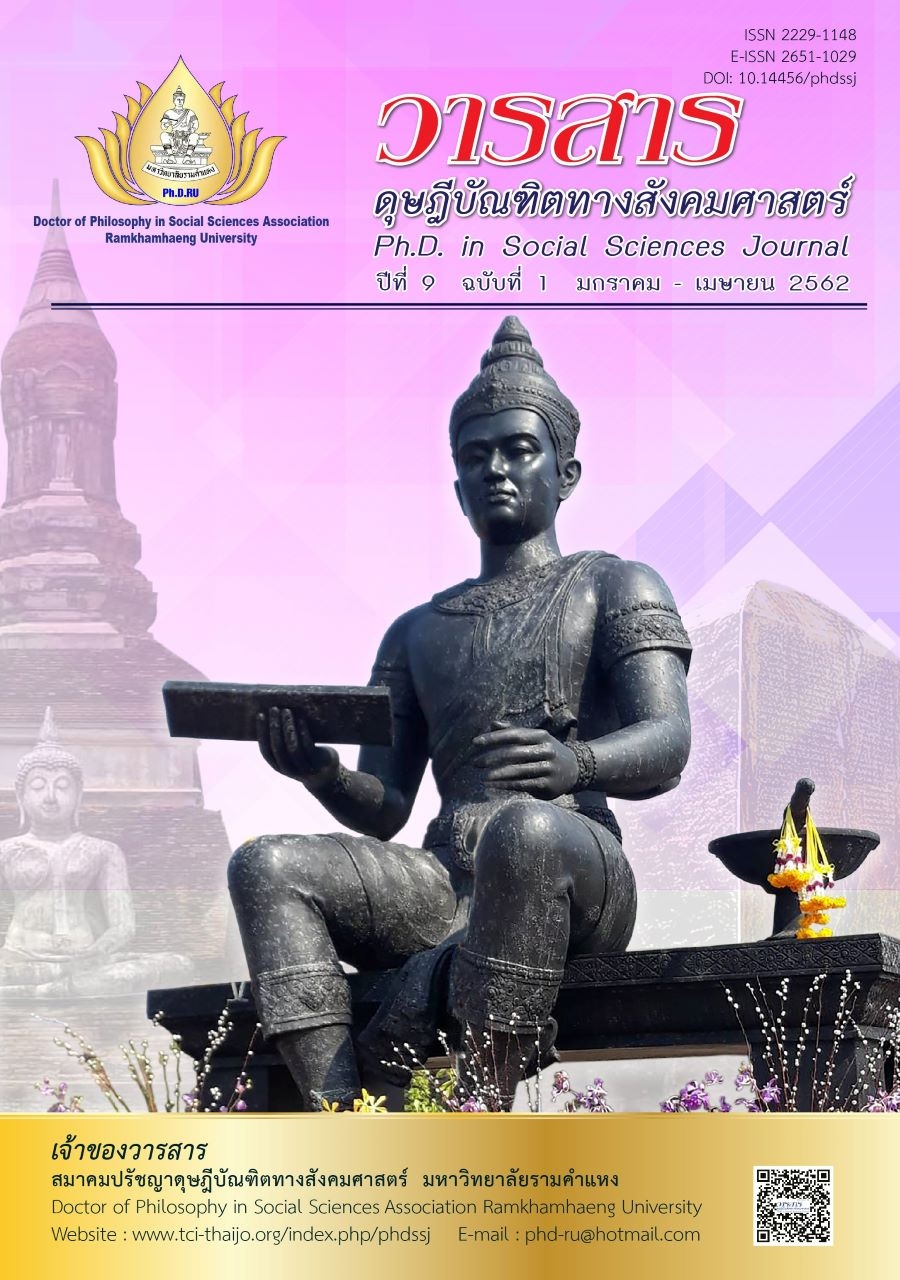Socio-Cultural Factors in the Participation in Governmental Services
Main Article Content
Abstract
In contemporary period, the state has expanded its activities to the people with an aim to bring well-being to society. But in reality, there has been formed gap or discrepancy between the policy enacted and the goal achieved in practice in the process of policy implementation both during the implementation period and number of people participated.
This research to explain that some of reasons behind the time lag or obstacle in making use of governmental services, particularly in health care matters appear to have been due to social and cultural factors. These factors seem to have been affected by currents of changes due to globalization and gradual rise in more open and positive psychological stance as well as the wide spreading democratic ideas and practice. The result should be the reduction in socio-cultural obstacles to the participation of the people to governmental services.
Article Details
Academic articles, research articles, and book reviews in the Ph.D. in Social Sciences Journal are author’s opinions, and not the publisher’s, and is not the responsibility of the Ph.D. in Social Sciences Journal Philosophy Association, Ramkhamhaeng University. (In the case that research is done on human, the researcher has to be trained in Ethics for Doing Research on Human Training and has to produce the evidence of the training).
References
Coleman, J. S. (1987). Families and school. Educational Researcher, 16(6), 32-38.
Dell’ Antonia, K. J. (2018). Raising optimistic kids in an era of pessimism. TIME; September, 3-10: p.15.
Fulcher, J., & Scott, J. (2011). Sociology (4th ed.). New York: Oxford University Press.
Gabriel, A. A., & Sydney, V. (1963). The civic culture. New York: Princeton University Press.
Oliver, P. (2015). Sociology: A complete introduction. London: Hodder & Stoughton.
Pressman, J. L., & Wildavsky, A. (1973). Implementation: How great expectations in Washington are dashed in Oakland: Or why it is amazing that federal programs work at all. Berkeley, CA: University of California Press.
Riesman, D. (1950). The lonely crowd. New Haven, CT: Yale University Press.
Riley, J. N., & Sermsri, S. (1974). The variegated Thai medical system as a context for birth control services. Working paper no. 6. Nakhon Pathom: Mahidol University, Institute for Population and Social Research.
Schaefer, R. T., & Lamm, R. P. (1997a). Sociology: A brief introduction (2nd ed). New York: McGraw-Hill.
Schaefer, R. T., & Lamm, R. P. (1998b). Sociology (6th ed.). New York: McGraw-Hill.
Sermsri et al. (2003). Government health care services of the poor in rural areas, Thailand. Nakhon Pathom: Mahidol University, Faculty of Social Sciences and Humanities. [In Thai]
Sermsri, S., & Others. (2011). Thai people, Thailand and the management administration in government organization in contempolary Thai society. Journal of Demography, 27(2), 64-84. [In Thai]
Zola, I. K. (1972). Medicine as an institution of social control. Sociological Review, 2(4), 487-504.


